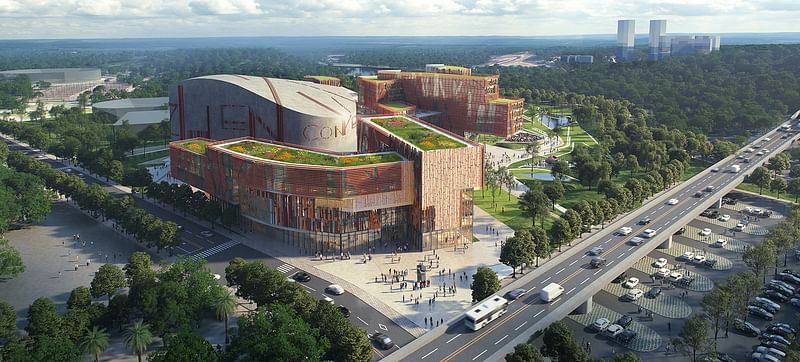Miralles Tagliabue EMBT to design Shenzhen Conservatory of Music
By Alexander Walter|
Tuesday, Mar 30, 2021

Related
In Shenzhen's ambitious quest of finding the world's best architects to design ten new major cultural landmarks in and around the booming metropolis (previously), another winning entry has been revealed: the jury of the international design competition for the Shenzhen Conservatory of Music selected the proposal by Barcelona-based Miralles Tagliabue EMBT, in collaboration with local architects HYP-Arch Design, as the 1st prize.

The master plan complex consists of multiple buildings integrated into the Shenzhen Longgang campus of the Chinese University of Hong Kong (CUHK). Sitting on a 73,777-square-meter-plot (794,129 square feet), the facilities will provide 129,700 square meters (1.4 million square feet) of floor area for teaching spaces, an experimental practice studio, library, sports complex building, dining hall, administrative office, faculty dormitory as well as performance buildings, like a 700-seat theater, a 500-seat concert hall, and a 200-seat rehearsal hall.

"Our master plan offers a well-balanced dialogue with its built and natural surroundings," explains the project description. "It is responsive to both edge conditions with nature, one being green towards the university park and the other edge condition being water towards the Shenxian Hill reservoir. A dialogue with water and green in a fantastic strategic position, the new complex will be a serene environment that is characterized by the strong presence of the main theater, which announces the campus from the distance."

"The main theater stands out as the protagonist and places the campus from distant perspectives, opening it up to the public and the city. The division of the limits between the interior and the exterior is totally blurred thanks to the fluidity of the connection with nature, creating a complete fusion with the landscape."

"The distribution of the pieces respectfully connects with the existing University Campus to provide continuity to the intervention. Passive strategies for energy management have been a priority in the design."

"A detailed study of the orientations and natural, traditional, and environmentally friendly materials, such as wood and ceramics, has been applied. The result is an organic architecture and facades of sustainable materials with compositions that resemble some musical scores."

"The main axis of the complex articulates the position of the buildings for artistic performance: rehearsal room, concert hall, and theater. Meanwhile, the bright and green interior squares vertically link the learning spaces with those for musical interpretation, as if it were a living organism in which all parts are interconnected, in which education and creativity flow and share space."

"The library, the students’ dorms and the administration are also connected transversely to the complex. The set of buildings creates a unique educational model based on the relationship with nature and the belief in the ability of architecture to motivate creativity in the university community."
Related reading: SANAA and Jean Nouvel win major Maritime Museum and Opera House competitions in Shenzhen

RELATED NEWS SANAA and Jean Nouvel win major Maritime Museum and Opera House competitions in Shenzhen

RELATED NEWS Miralles Tagliabue EMBT to design new biodiversity center in Germany


Share
0 Comments
Comment as :